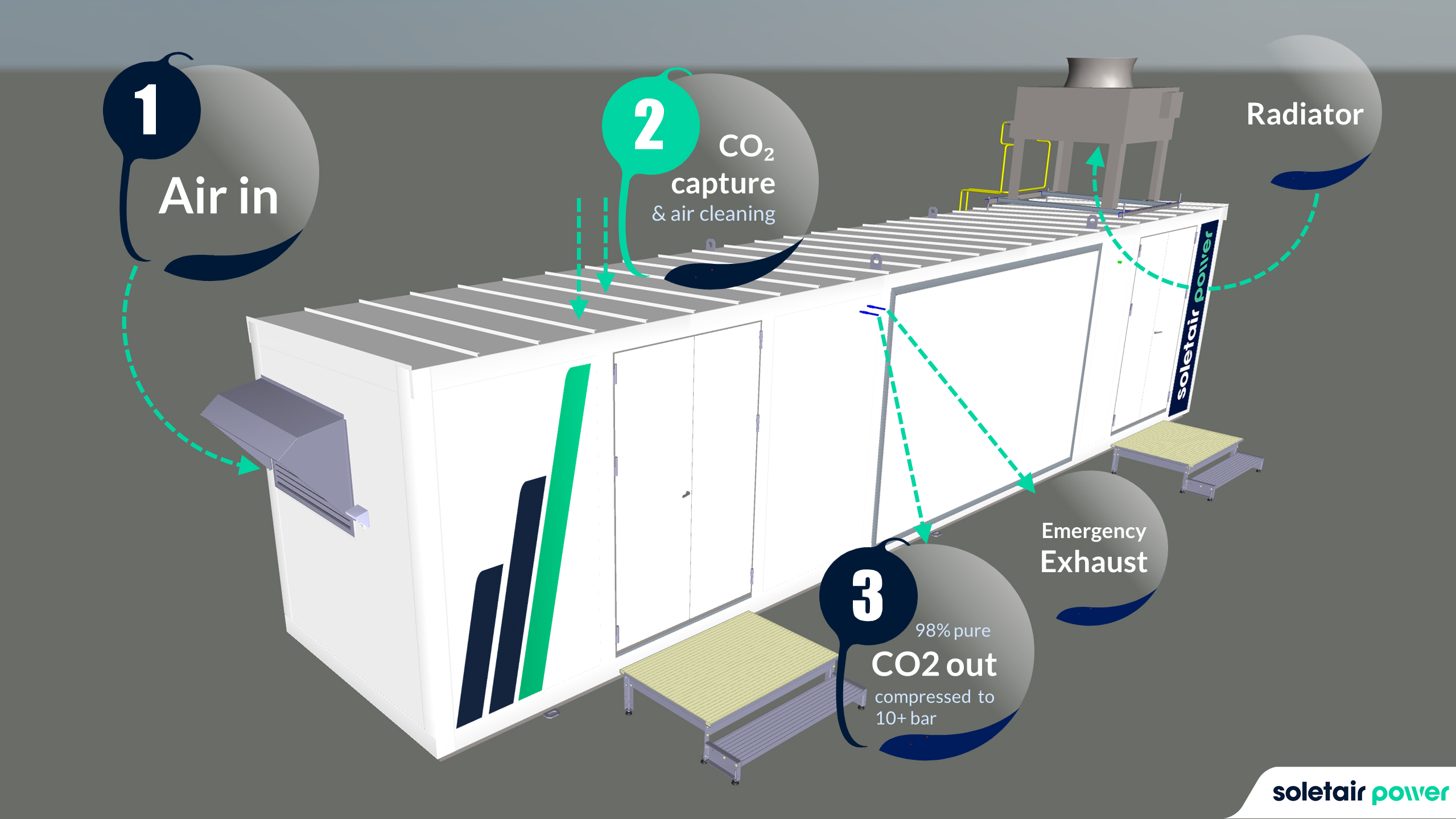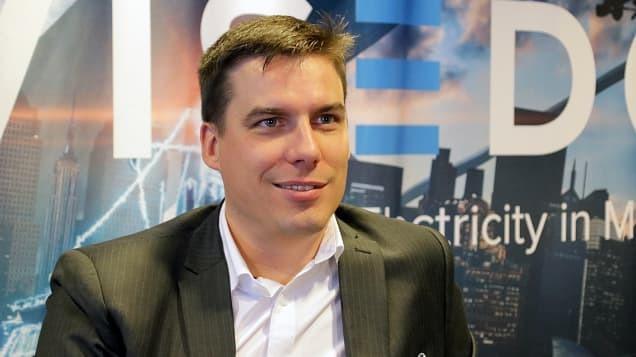The time has come for a more direct approach to climate change, one where carbon capture becomes the norm. What technologies are already out there and how do we accelerate their widespread deployment?

In addition to cutting emissions, to meet the Paris Agreement targets the world will need to collectively remove up to 17 billion tonnes of carbon dioxide (CO2) already produced – so-called legacy emissions – from the atmosphere by 2050, especially those emissions that are extremely hard to eliminate, such as through industrial processes. What technologies are available and how do we scale them up to stop climate change?
Carbon removal vs. carbon capture
While much of the focus so far has been on capturing CO2 from fossil sources, some experts now point to the fact that we should be focusing on capturing CO2 from biogenic sources or directly from air.
Though carbon removal starts with carbon capture, there is a difference between the two. A technology such as carbon capture can lead to either carbon reduction or removal depending on source and end-use: for example, if CO2 is captured from a fossil-fuelled power plant and ends up in geological storage sites or is permanently stored in other ways, then this would be reducing CO2, which would have entered the atmosphere otherwise. If CO2 is captured from air or from waste/biomass and stored permanently, then that’s removal, as CO2 is removed from the system altogether.
According to Petri Laakso, CEO at Soletair Power, a Finnish start-up working in the fields of direct air capture and Power-to-X, the only way to lower the amount of CO2 in the air and achieve negative emissions is by actually taking it out of the air.
However, Andrew Jones, Carbon Dioxide Removal Technology Manager at U.S. Department of Energy, points out that these technologies are “additionally required and not a substitute for economy-wide deployment of carbon capture and other low- and zero-carbon solutions that reduce and ultimately eliminate greenhouse gas emissions from existing sources”.
Carbon removal technologies and methods available now
Central to achieving net-zero emissions by 2050 is a wide-scale deployment of carbon management technology and infrastructure in energy, industry, and manufacturing. According to Jones, this needs to be done across the entire value chain of carbon capture, removal, conversion, CO2 transport, and secure geologic storage.
Jones points to a diverse set of carbon dioxide removal approaches, including direct air capture and direct ocean capture with secure geologic storage. There is also biomass carbon removal and storage, as well as mineralisation of atmospheric CO2. Laakso mentions concrete production as another effective method: precast concrete can tie down large quantities of CO2 and it can even make it possible to have carbon-negative concrete.
The technology is expensive, and it needs subsidies now to make it profitable. With direct air capture, we might be able to remove 5 billion tonnes of CO2 per year by 2050.
There are also many start-ups deploying promising carbon removal technologies. For example, Soletair Power’s modular carbon removal solutions are easily installed on a building’s premises or retrofitted within the existing HVAC systems. This, says Laakso, can turn buildings into large carbon sinks instead of them being one of the biggest sources of emissions that they are today. Soletair Power’s solution can achieve 50% negative emissions in an average office building in Finland. The removed CO2 can also be reused as a non-fossil-based resource in a wide array of applications.
“These kinds of synthetic fuels are basically carbon-neutral if we use renewable electricity to make them. This way we can still fly in aeroplanes and still be sustainable,” Laakso adds.
In Southeast Asia, a promising carbon removal technology involves producing high-carbon, slow-decaying biochar products from waste biomass, which is a highly-scalable and much cheaper option than technologies such as direct air capture (DAC) – at least in the short term, according to Hasan Muslemani, OIES-KAPSARC Senior Research Fellow & Head of Carbon Management Research at the Oxford Institute for Energy Studies.
In the biochar space, companies from Asia are collaborating with European and North American customers who are interested in investing in such projects and purchasing biochar-based removal credits. An example of a company already implementing such a model is Husk, which helps farmers in Cambodia develop biochar products, including carbon-based soil enhancers, granulated bio fertilisers and liquid biostimulants.
As big as oil and gas?
Though the technologies are already there, it will take some time to scale them up and deploy them more widely – especially across different regions of the world.
In the USA, for example, the government offers subsidies for these kinds of technologies. For Laakso, these kinds of subsidies are one of the main ways we can deploy these technologies on a wider scale.
“I see carbon removal technologies like solar panels in the 1990s. The technology is expensive, and it needs subsidies now to make it profitable. With direct air capture, we might be able to remove 5 billion tonnes of CO2 per year by 2050,” he adds.
In the EU, the growing cost of the carbon tax might also give carbon removal technologies the boost they need. Now, the carbon tax is about EUR 100 per tonne at the moment.
“If you’re capturing from a point source that’s already a profitable business. But that’s only limiting emissions. So, when the technology is at the same price as the carbon tariff, then it will be pure business. International Energy Agency estimates that the carbon capture and removal business will be as big as oil and gas by 2050,” Laakso explains.
All eyes on Asia
While there has been very commendable progress made in Europe and North America recently, especially for DAC technology, similar developments are yet to be seen in the Southeast Asia/China region, according to Muslemani.
“When it comes to decarbonisation, China’s focus so far has been on either shifting to renewables (where and when possible) or piloting Carbon Capture, Utilisation and Storage (CCUS) projects on fossil-powered plants which, while necessary, only lead to emissions reduction rather than carbon ‘removal’. The reason why this has been the case is the lack of financial incentives by government: the current CO2 price in the Chinese Emissions Trading System is too low (less than USD 10/tCO2) to incentivise companies to adopt CCUS,” Muslemani explains.
These [investments] will help deliver real-world carbon management solutions that meet our climate obligations, ensure energy security and reliability, create high-wage jobs, and improve people’s lives.
Government policies, programmes and initiatives are needed to incentivise the widespread use of these technologies. For example, in the USA the Department of Energy launched “Carbon Negative Shot” in 2021. It aims to achieve just, sustainable, and scalable carbon dioxide removal at costs below USD 100/net metric tonne of CO2-equivalent and also facilitate gigatonne-scale removal by mid-century. Similar policy mechanisms are needed in China and Southeast Asia.
“These can either include direct financial benefits (or ‘carrots’) such as the CCUS provisions under the US Inflation Reduction Act which provide a certain level of support in the form of tax credits for both CCS and DAC projects or through carbon taxation (‘sticks’) which has been the main driver for CCUS investments in places like Scandinavia,” Muslemani adds.
For Jones, this and historic investments from the Bipartisan Infrastructure Law and most recently the Creating Helpful Incentives to Produce Semiconductors (CHIPS) and Science Act and Inflation Reduction Act present an unprecedented, once-in-a-generation opportunity.
“These will help deliver real-world carbon management solutions that meet our climate obligations, ensure energy security and reliability, create high-wage jobs, and improve people’s lives,” Jones concludes.





